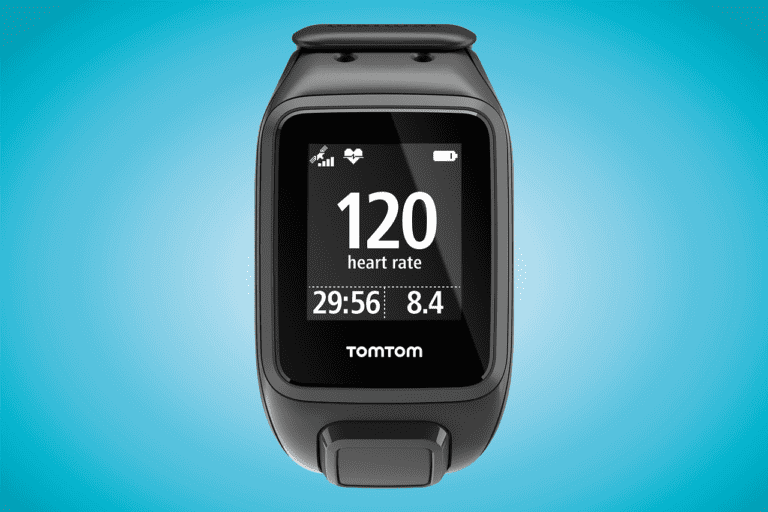A Practical Guide To Personal Cybersecurity
Are you concerned about the security of your personal information in today’s digital age? With cyber threats becoming increasingly sophisticated, it is essential for individuals to take proactive measures to protect themselves online. This article serves as a practical guide to personal cybersecurity, providing you with valuable insights and actionable steps to safeguard what matters most to you.
In the first section, we will delve into understanding the threat landscape. By familiarizing yourself with the various types of cyber threats and their potential impact, you will be better equipped to identify potential risks and vulnerabilities in your digital life.
Next, we will explore how to secure your devices and accounts effectively. From setting up robust passwords to implementing two-factor authentication, these strategies will fortify your defenses against unauthorized access or data breaches.
The second section focuses on practicing safe online habits. It highlights important practices such as avoiding suspicious websites or links, being cautious with email attachments, and regularly updating software and applications. Additionally, we will discuss ways to protect your personal information both offline and online – from securing physical documents to using encryption techniques for sensitive data transmission.
Lastly, staying informed and educated is key in maintaining a strong cybersecurity posture. We will provide resources for ongoing learning that can help you stay up-to-date on emerging threats and best practices.
By following this practical guide, you can empower yourself with the knowledge necessary to navigate the digital realm securely. Don’t leave your personal cybersecurity to chance – take control of protecting what matters most today!
Key Takeaways
- Stay informed about the ever-evolving threat landscape and best practices in cybersecurity.
- Implement strong passwords and two-factor authentication to protect accounts.
- Regularly update software and applications to patch vulnerabilities.
- Practice safe online habits, such as avoiding suspicious websites and email attachments.
Understand the Threat Landscape
To fully comprehend the threat landscape, you must be aware of the various forms of cyberattacks and their potential consequences on your personal cybersecurity. Know your enemy by understanding the different types of threats that exist in the digital world.
Cybersecurity threats analysis is crucial in identifying and evaluating potential risks to your devices and accounts. This knowledge will empower you to take preventive measures and protect what matters most.
Understanding the attack vectors is an essential aspect of personal cybersecurity. Attack vectors refer to the methods or pathways through which cybercriminals gain unauthorized access to your devices or accounts. By familiarizing yourself with these attack vectors, such as phishing emails, malware, or social engineering tactics, you can better defend against them. It allows you to identify suspicious activities or potential vulnerabilities in your systems and take immediate action to mitigate any risks.
By comprehending the threat landscape and understanding attack vectors, you can secure your devices and accounts effectively. Implementing strong passwords, enabling multi-factor authentication, keeping software up-to-date are some preventive measures that significantly enhance your personal cybersecurity. Additionally, being cautious about clicking on unknown links or downloading files from untrusted sources can help prevent malware infections.
Secure your devices and accounts by following these best practices, ensuring a robust defense against cyber threats without compromising convenience.
Transition: Now that you have a comprehensive understanding of the threat landscape and how attackers operate through various attack vectors, let’s delve into securing your devices and accounts for enhanced personal cybersecurity.
Secure Your Devices and Accounts
Ensure your devices and accounts are secure by implementing strong passwords and enabling two-factor authentication. Two-factor authentication adds an extra layer of security to your accounts by requiring you to provide a second form of verification, such as a unique code sent to your phone, in addition to your password. This helps prevent unauthorized access even if someone manages to obtain your password. Make sure to enable this feature on all your accounts that offer it.
In addition to two-factor authentication, practicing good password management is crucial for protecting your devices and accounts. Create strong, unique passwords for each of your online accounts and avoid using easily guessable information like birthdays or names. Use a combination of uppercase and lowercase letters, numbers, and special characters. Consider using a reputable password manager tool that can generate complex passwords for you and securely store them.
To further enhance the security of your devices and accounts, it is important to stay informed about the latest cybersecurity threats and best practices. Regularly update the software on your devices, including operating systems, antivirus programs, and apps. These updates often include security patches that address known vulnerabilities. Additionally, be cautious when downloading files or clicking on links from unknown sources as they may contain malware or phishing attempts.
Transition: Now that you have secured your devices and accounts with strong passwords and two-factor authentication measures in place…
Practice Safe Online Habits
Now that your devices and accounts are fortified, it’s time to navigate the vast online world with caution, like a skilled sailor navigating treacherous waters.
Developing strong passwords is crucial in safeguarding your personal information. Make sure your passwords are unique, complex, and not easily guessable. Incorporate a combination of uppercase and lowercase letters, numbers, and special characters. Avoid using common phrases or personal information that can be easily deduced.
Remember to change your passwords regularly and never reuse them across different accounts.
In addition to strong passwords, it’s essential to recognize phishing attempts. Phishing is a deceptive technique used by cybercriminals to trick individuals into revealing sensitive information such as usernames, passwords, or credit card details. Be wary of unsolicited emails or messages asking for personal information or directing you to click on suspicious links. Check for spelling errors or unusual email addresses as these are often signs of phishing attempts.
Always verify the source before providing any confidential data.
By developing strong passwords and being vigilant against phishing attempts, you can protect yourself from potential cyber threats while maintaining control over your personal information online.
Transitioning into the subsequent section about protecting your personal information without explicitly stating ‘step,’ remember that practicing safe online habits is just one aspect of ensuring comprehensive cybersecurity measures are in place to safeguard what matters most to you.
Protect Your Personal Information
Safeguard your sensitive data online by taking proactive measures to secure and shield your personal information. In today’s digital age, data breaches have become increasingly common, making it crucial for individuals to prioritize their online privacy. By implementing effective strategies, you can minimize the risk of falling victim to hackers and protect your personal information from unauthorized access.
One important step in protecting your personal information is to create strong and unique passwords for all your online accounts. Avoid using easily guessable information such as birthdays or names. Instead, opt for a combination of uppercase and lowercase letters, numbers, and special characters. Additionally, enable two-factor authentication whenever possible to add an extra layer of security.
Another essential aspect is being cautious about the websites you visit and the links you click on. Phishing attacks are prevalent methods used by hackers to gain access to your personal information. Be wary of suspicious emails or messages asking for sensitive details or containing unfamiliar links. Always verify the legitimacy of a website before entering any personal data.
To further emphasize the importance of securing your personal information online, consider this table:
| Data Breaches | Online Privacy |
|---|---|
| Expose sensitive user information | Protects individual privacy |
| Can result in identity theft | Safeguards against unauthorized access |
| Commonly target financial institutions | Ensures confidentiality of personal data |
| Require prompt action from affected individuals | Mitigates risks associated with cyber threats |
By understanding the consequences of data breaches and valuing online privacy, individuals can take appropriate steps to safeguard their personal information effectively.
Moving forward into the subsequent section about ‘stay informed and educated,’ it is vital to stay updated with emerging cybersecurity threats and advancements in protective measures without compromising convenience or usability in our daily lives.
Stay Informed and Educated
To stay informed and educated about cybersecurity, it’s crucial to keep up with the latest news and trends in the field.
By staying updated, you can learn about new threats and vulnerabilities, as well as effective countermeasures.
Participating in cybersecurity awareness programs and training will further enhance your knowledge and skills.
Lastly, regularly reviewing and updating your cybersecurity practices ensures that you’re implementing the most effective measures to protect yourself from potential cyber threats.
Keep up with the latest cybersecurity news and trends
Stay informed about the latest cybersecurity news and trends to ensure you’re up-to-date on how to protect yourself online. Cybersecurity innovations are constantly evolving, and staying aware of these advancements is crucial in defending against emerging threats.
By keeping up with the latest news, you can learn about new hacking techniques, vulnerabilities in popular software, and best practices for protecting your personal information. Additionally, following cybersecurity trends allows you to stay ahead of potential attacks and adopt proactive measures to safeguard your digital presence.
Being aware of the ever-changing landscape of cybersecurity is not only a wise decision but also a necessary one. It enables you to understand the current state of online security and adapt your defenses accordingly. Moreover, learning from recent incidents and breaches can provide valuable insights into common attack vectors and help you identify potential vulnerabilities in your own systems or behaviors.
Stay vigilant by regularly reading reputable sources for cybersecurity news, attending webinars or conferences, and engaging with experts in the field. This knowledge will empower you to take control of your online safety effectively.
Transitioning into the subsequent section about participating in cybersecurity awareness programs and training, it is important to supplement your knowledge gained from staying up-to-date with practical education that goes beyond just understanding the latest trends.
Participate in cybersecurity awareness programs and training
Get in on the action and enhance your cybersecurity knowledge by actively participating in cybersecurity awareness programs and training. By attending cybersecurity workshops and online safety seminars, you can gain valuable insights into the latest threats and best practices for protecting yourself online. These programs often cover topics such as phishing attacks, password security, social engineering techniques, and data privacy. Additionally, they provide opportunities to learn from industry experts who can share real-world examples and practical tips for staying safe in an increasingly digital world.
To give you an idea of the kind of information you can expect from these programs, here’s a table summarizing some common topics covered:
| Topic | Description | Importance |
|---|---|---|
| Phishing Attacks | Learn how to identify and avoid phishing emails and websites | Essential for preventing account compromise |
| Password Security | Understand best practices for creating strong passwords | Crucial for protecting sensitive information |
| Social Engineering | Recognize manipulation tactics used to trick individuals | Helps guard against scams and unauthorized access |
Participating in these cybersecurity awareness programs not only helps you stay informed about the latest threats but also equips you with the knowledge needed to protect yourself effectively. Now that you’ve gained insights from these programs, let’s move on to the next section about regularly reviewing and updating your cybersecurity practices.
Regularly review and update your cybersecurity practices
Keeping up with the latest cybersecurity practices is crucial in order to stay one step ahead of potential threats and ensure the safety of your digital information. As technology evolves, so do the methods used by cybercriminals to gain unauthorized access to personal data. By regularly reviewing and updating your cybersecurity practices, you can minimize the risk of falling victim to these malicious attacks.
To effectively protect yourself online, it’s important to review your current cybersecurity practices on a regular basis. This includes assessing the security measures you have in place for your devices, such as strong and unique passwords, two-factor authentication, and encryption.
Additionally, regularly reviewing your privacy settings on social media platforms and other online accounts can help prevent unauthorized access to your personal information.
Updating your cybersecurity measures is equally important as cyber threats continue to evolve. Make sure you keep all your software, applications, antivirus programs, and operating systems up-to-date with the latest patches and security updates. These updates often address vulnerabilities that hackers may exploit. Regularly backing up important files is also essential in case of a ransomware attack or hardware failure.
Reviewing and updating your cybersecurity practices are fundamental steps in protecting yourself from potential threats online. By staying proactive and diligent in implementing these measures, you can enhance the security of your digital information and safeguard what matters most to you.
Frequently Asked Questions
How can I protect my physical devices from cyber threats?
To protect your physical devices from cyber threats, it’s crucial to implement strong cybersecurity measures.
Did you know that in 2020 alone, there was a 350% increase in ransomware attacks targeting Internet of Things (IoT) devices? This statistic highlights the importance of taking proactive steps to safeguard your devices.
Start by regularly updating the software and firmware on all your devices. These updates often contain essential security patches.
Additionally, enable strong authentication methods such as two-factor authentication (2FA) or biometric authentication whenever possible. This adds an extra layer of protection.
Be cautious when connecting to public Wi-Fi networks. Consider using a virtual private network (VPN) for secure internet browsing.
Lastly, invest in reputable antivirus software and regularly scan your devices for any malware or suspicious activity.
By implementing these cybersecurity measures, you can significantly reduce the risk of cyber threats compromising your physical devices.
What should I do if I suspect that my personal information has been compromised?
If you suspect that your personal information has been compromised, there are several steps you should take to mitigate the potential damage.
First, immediately change all of your passwords for online accounts, especially those containing sensitive information. Additionally, enable two-factor authentication whenever possible to add an extra layer of security.
Next, monitor your financial statements and credit reports regularly for any suspicious activity or unauthorized transactions. It is also crucial to contact your bank or credit card company to report the incident and request a freeze on your accounts if necessary.
Furthermore, notify the relevant authorities such as local law enforcement or the Federal Trade Commission (FTC) about the breach. Finally, consider placing a fraud alert on your credit files to provide an extra level of protection against identity theft.
Remember to stay vigilant and promptly address any signs of compromise to safeguard your personal information effectively.
Are there any specific online habits that can help prevent cyberattacks?
To prevent cyberattacks, it’s crucial to develop and practice good online habits and follow best practices. Here are some specific habits that can help:
- Keep your devices and software up to date with the latest security patches.
- Regularly update your passwords, making sure they’re strong and unique for each online account.
- Be cautious when clicking on links or downloading attachments from unknown sources. These can be sources of malware or phishing attempts.
- Enable two-factor authentication whenever possible. It adds an extra layer of security to your accounts.
- Avoid sharing sensitive information on public Wi-Fi networks. Consider using a virtual private network (VPN) for added protection.
- Lastly, regularly back up your data to ensure you have copies in case of a cyberattack or data loss incident.
By consistently following these online habits and best practices, you can significantly reduce the risk of falling victim to cyberattacks.
How often should I update my antivirus and security software?
To ensure the highest level of protection for your digital devices, it’s crucial to regularly update your antivirus and security software. This practice, known as maintaining software, is one of the best practices in personal cybersecurity. By keeping your antivirus and security software up to date, you’re equipping yourself with the latest defenses against emerging threats and vulnerabilities.
Regular updates enhance the effectiveness of these tools by patching any existing weaknesses or bugs that cybercriminals may exploit. It’s recommended to set automatic updates for both your antivirus and security software, ensuring they’re constantly updated without requiring your manual intervention.
By adopting this proactive approach, you can significantly reduce the risk of falling victim to cyberattacks while safeguarding what matters most to you online.
What are some reliable sources to stay informed about the latest cybersecurity threats and trends?
To stay informed about the latest cybersecurity threats and trends, you should consider following cybersecurity news platforms and participating in industry-specific forums.
Cybersecurity news platforms provide up-to-date information on emerging threats, new vulnerabilities, and best practices to protect yourself online. Trusted sources such as Krebs on Security, Dark Reading, and Threatpost can keep you well-informed.
Additionally, joining industry-specific forums allows you to engage with professionals who have firsthand experience in the field. Platforms like Reddit’s r/cybersecurity or specialized forums for IT professionals like Spiceworks can be great resources for discussions, sharing insights, and staying updated on the latest trends.
By actively engaging with these sources, you can enhance your knowledge of cybersecurity and better protect yourself from potential risks.
Conclusion
In conclusion, safeguarding your personal cybersecurity is of utmost importance in today’s digital age. By understanding the ever-evolving threat landscape, you can effectively protect what matters most to you.
Take proactive steps to secure your devices and accounts by utilizing strong passwords, enabling multi-factor authentication, and keeping software up to date.
Additionally, practicing safe online habits such as being cautious of suspicious emails or links and avoiding public Wi-Fi networks can significantly reduce the risk of falling victim to cyberattacks. Remember that protecting your personal information should be a top priority.
Be vigilant about sharing sensitive data only with trusted sources and regularly monitor your financial accounts for any signs of unauthorized activity.
Stay informed and educated about the latest cybersecurity threats and best practices. Just like staying updated on current events helps you make informed decisions in the real world, being aware of potential cyber threats empowers you to take appropriate measures to protect yourself.
By following these practical guidelines, you’ll create a virtual fortress around your personal information, ensuring its safety from malicious actors who seek to exploit vulnerabilities.







